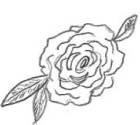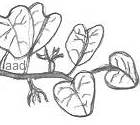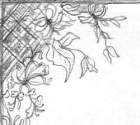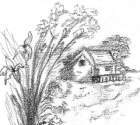Search for images or info
Drawing Techniques
Drawing techniques allow an artist to elaborate on designs using various pencil strokes. Among other things, these variations with a pencil can create volume, light and texture.
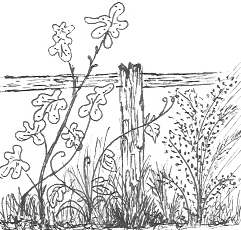
Drawings come to life with the particular skills of each artist and whatever techniques they choose to use.
It's a matter of experimenting with your pencil to find the technique that you like.
You can select just one of these pencil techniques or you are free to use all of them in your artistic portfolio.
Stippling is a favorite of mine, it's so easy to implement and it can be used instead of lines.
The weed-like plant on the far right of this illustration was created by using the simple stippling effect.
An artist doesn't have to painstakingly depict everything exactly. In fact, it's a lot nicer if you insert your impression of how something appears to you. Once you do that, you have stamped your artwork with the uniqueness that is you.
Tips and techniques are used to help us develop an original style, to find that little missing piece that is exclusive to each and every one of us. All it takes is an open mind and a willingness to learn.
Of course, there are many in-depth tutorials that aren't covered here because this information is aimed at helping beginners without being overwhelmed by too much information at once.
For example, have you tried the doodle exercise to kick start your creativity?
If you are looking for something entirely different, maybe a technique like frottage will be your answer. It is fun to test all different textures and witness the results that are often nothing like we thought they would be.
Grids are used by beginner artists and experienced artists alike. It's a technique used to help images look more life-like but it ultimately helps you to improve your drawing skills.
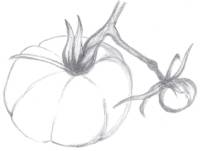
See the beginner's tutorial for including light and shade in your work. It really adds a new dimension to your artwork as demonstrated in the tomato illustration on the right.
If you are having trouble creating outlines, you could try observing the negative space around your subject.
All artists-in-training need to play with lines, experimenting with pressure on the pencil and different grades of graphite to see the different effects each one produces.
The simplicity of line drawings helps to ease you into the creation of all things bright and beautiful.
Another handy approach using accentuated lines is a great introduction to shading, allowing newbies the opportunity to understand shadows without much effort.
To further illustrate the variety of ways you can add shading to a drawing, see how to use blending to add extra spice to your illustrations.
Read the overview of how perspective works to create depth which gives the illusion of space and distance.
Drawing techniques help you make things more appealing/interesting and this in turn keeps the viewer intrigued with something extra to study.
Be adventurous and try some or all of these methods today. Happy drawings!
Categories
Sketches
Instruction
Freebies
Other Areas

There's more for you to enjoy...
* Allaboutdrawings.com is a participant in the Amazon Services LLC Associates Program, an affiliate advertising program designed to provide a means for sites to earn advertising fees by advertising and linking to Amazon.com.
Copyright © 2005 - 2025 www.allaboutdrawings.com. All rights reserved.





